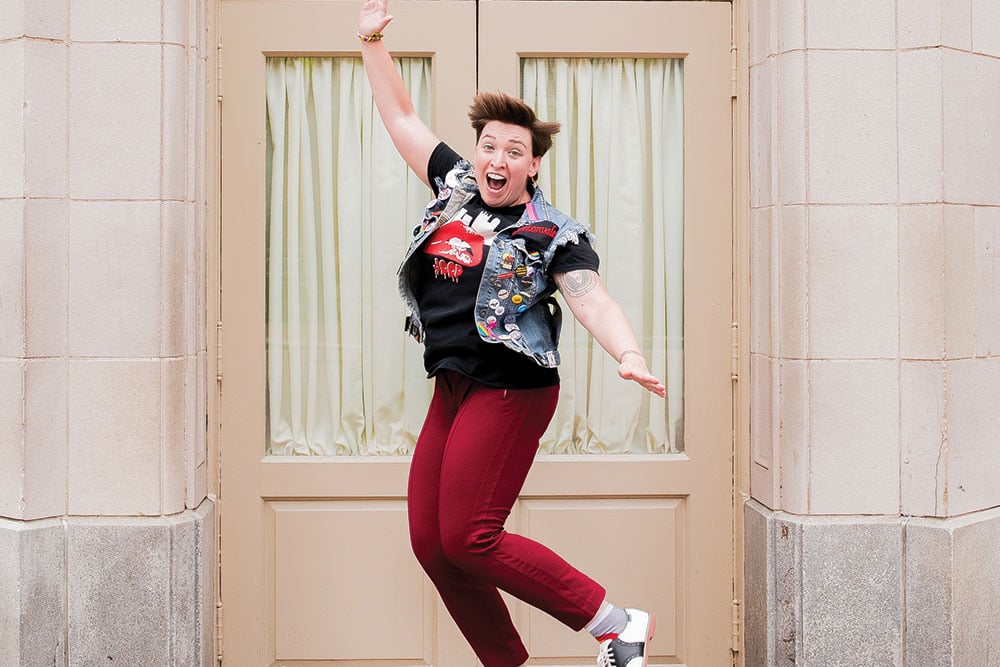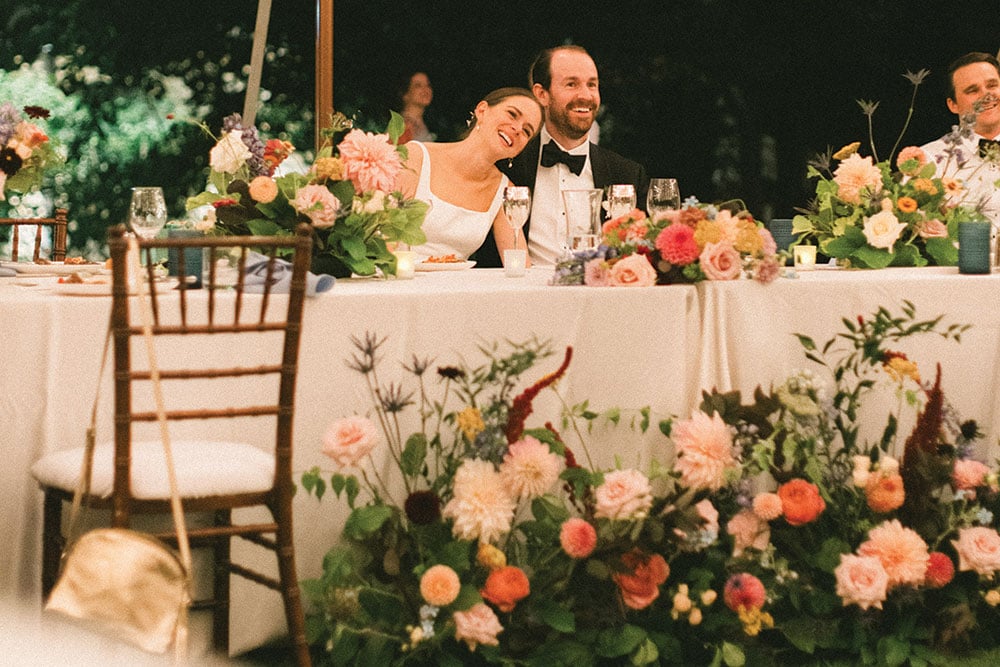Blind and Low Vision Tennis Courts Are Now Open Across Pittsburgh
Allegheny County officially opens blind and low vision tennis courts at Boyce, North, Settlers Cabin and South parks — the first permanent such courts in the nation.

ALLEGHENY COUNTY EXECUTIVE SARA INNAMORATO WEARS VISUAL IMPAIRMENT GLASSES TO SIMULATE HOW IT WOULD FEEL TO TRY HITTING A TENNIS BALL WITH LOW VISION. SHE’S AT A NEW COURT IN SOUTH PARK. | PHOTO BY RUBY SIEFKEN
“Ready? Play!”
This tennis match starts like any traditional game with the echoing “thwack” of firm foam against the tight webbing of a tennis racket’s sweet spot. But, as the ball travels through the air to land on the opposite side of the net, it makes a distinct rattling sound to let the opposing player know when and where to react.
These tennis players are missing a seemingly vital part of the game — their vision.
On Monday, Allegheny County officials unveiled the first permanent blind and visually impaired tennis courts in the nation — now located in South Park, Boyce Park, North Park and Settlers Cabin.
@pittsburghmagazine Allegheny County officials unveiled the first permanent blind and visually impaired tennis courts in the nation. #Tennis #Pittsburgh #Accessibility #Blind #VisuallyImpaired ♬ Challengers: Match Point (Challengers Soundtrack) – Trent Reznor & Atticus Ross
The courts are actually a project organized and set up by the nonprofit Highland Park Tennis Club, which has been offering free summer clinics for blind and visually impaired players since 2019 on courts with temporary modifications.
Blind and visually impaired tennis, otherwise known as BVI tennis, was created in 1984 by Mioshi Takei, a blind Japanese athlete. The sport is now played in 40 countries internationally, making the U.S. behind the ball in such adaptive sports. The Highland Park Tennis Club — which has been based at the courts on Stanton Avenue in the Highland Park neighborhood — and the United States Blind Tennis Association started this project in Pittsburgh to change that.
“When you have to modify something that everyone else just gets to walk on and use, it just makes you feel a certain way,” says County Executive Sara Innamorato, who tried some tennis shots Monday on the courts in South Park as she wore visually impaired glasses to see what the experience is like.
“We’re saying come as you are,” she says. “We have the courts ready for you.”
The project was largely created by Dana Squelch-Costa, president of the United States Blind Tennis Association, or USBTA.
Costa founded USBTA for her daughter, who was born with a visual impairment. In cooperation with Carlow University professor Jennifer K. Roth, Innamorato and the Highland Park Tennis Association, Costa made her dreams — and her daughter’s — a reality.
“It allows for my daughter to just be free and play, just as any other child or adult would,” says Costa. “It breaks down those boundaries and allows for freedom and removes the stereotypical inability to play a sport because you have some disability or some limitation.”
So, how do blind athletes play tennis? There are several modifications that make this sport possible without vision.
Players are split into visual classifications to determine which set of rules the athlete will follow. Players who are ranked B1 have no vision, play with shorter rackets and are allowed three bounces on each side of the net. B2 and B3 players have fuzzy or poor partial vision and are allowed two bounces. B4 and B5 players have good partial sight, and these players are allowed the traditional single bounce.
BVI tennis courts are smaller than traditional courts. The courts are outlined with raised lines which allow players to identify their position on the court by feeling the lines with their feet. Before permanent courts were established, these ridges were created by taping wire along the perimeter of the courts with tape.
The most important aspect of this sport are the sound-adapted tennis balls — the firm foam balls contain a rattling sound device that emits a noise when the ball is both in the air and once it hits the ground.
Roth, vice president of the United States Blind Tennis Association and a Highland Park Tennis Club community partner, has a background in cognitive neuroscience and is professor of psychology and counseling at Carlow University. She has led and participated in several science experiments regarding the brain’s ability to localize an object’s location based on sound.
In the future, Roth hopes to perfect her patented design for an electronic ball, which will make the sound easier to locate in the air using just your ears.
Highland Park’s tennis program has 16 members. Players can participate through 12-week summer clinics designed for visually impaired players as young as age 5.
Charles Gottus, who is blind, has been involved with the program for more than two years.
Gottus was diagnosed with retinitis pigmentosa when he was in the fifth grade. The rare genetic eye disease runs in his family and causes vision loss over time. Before his diagnosis, Gottus says he was very active and participated in baseball, tennis, hockey and other sports.
But, when his vision took a turn in his mid 30s, Gottus had to stop playing sports. He said it is one of the hardest things he’s ever had to do.
Fifteen years later, the 53-year old says he was nervous the first time he held a racket after years off the court.
“The second I hit that first ball, I was just like ‘Oh boy, this is what I’ve been missing,’” he says.
Since Gottus joined the club, it has taken part in several national tennis conventions, including an outing at the US Open.
He says the community of players and friends he’s made along the way have offered him the opportunity to share his experiences with others who share them. Gottus says he even hopes to compete one day.
“It’s just made a world of difference for me and it’s given me my confidence back,” he says.
“Chuck is one of the many reasons that we keep going,” says Costa, who took part in training Gottus at the Highland Park Tennis Club.
Costa says the USBTA is hoping to expand permanent courts across the United States. The organization works with regional tennis clubs to train instructors, recommend equipment, establish programming and teach trainers how to effectively interact with blind athletes.











